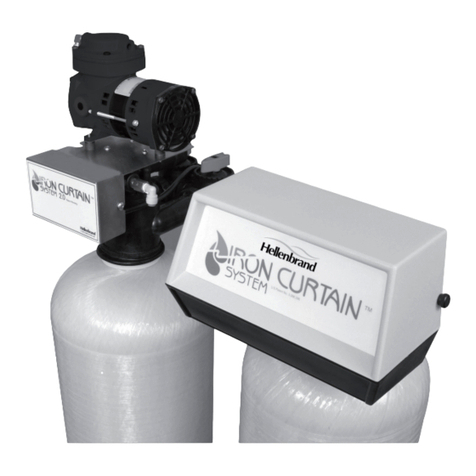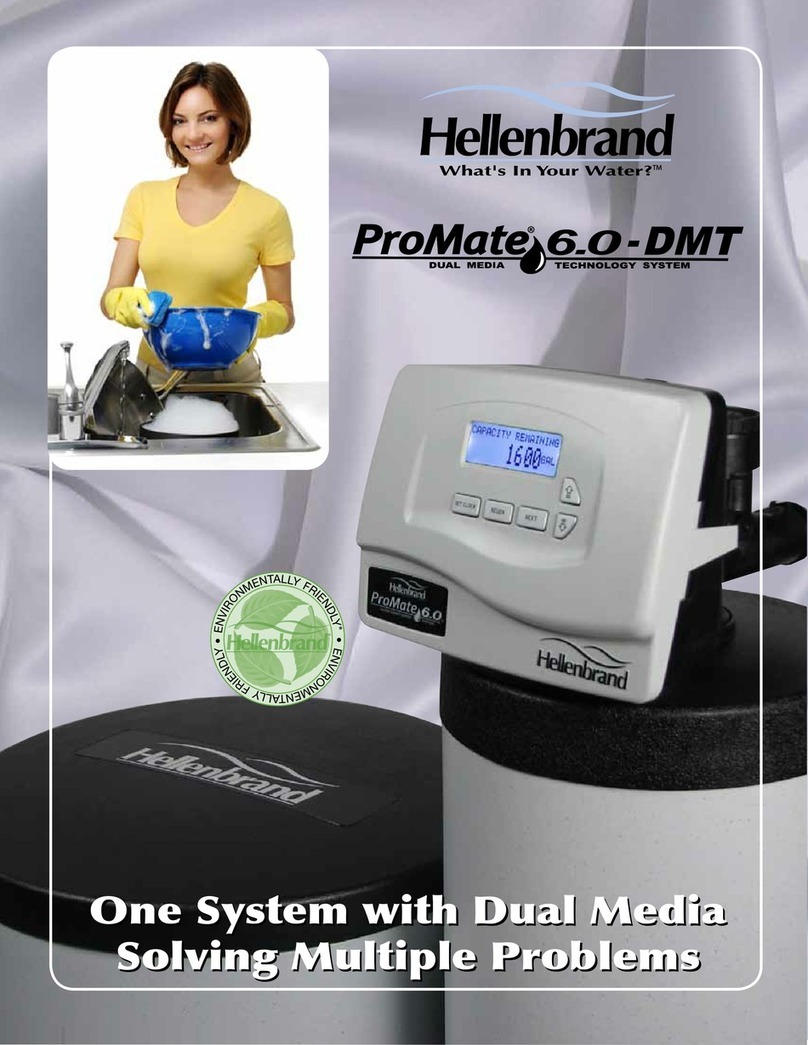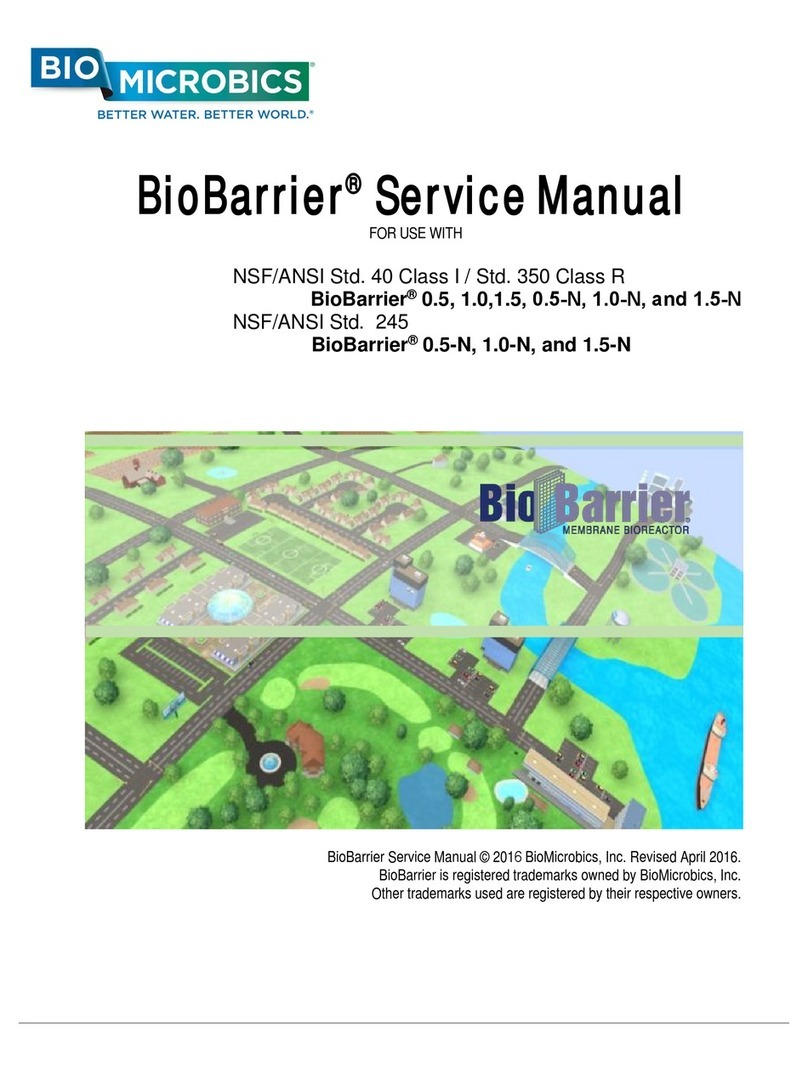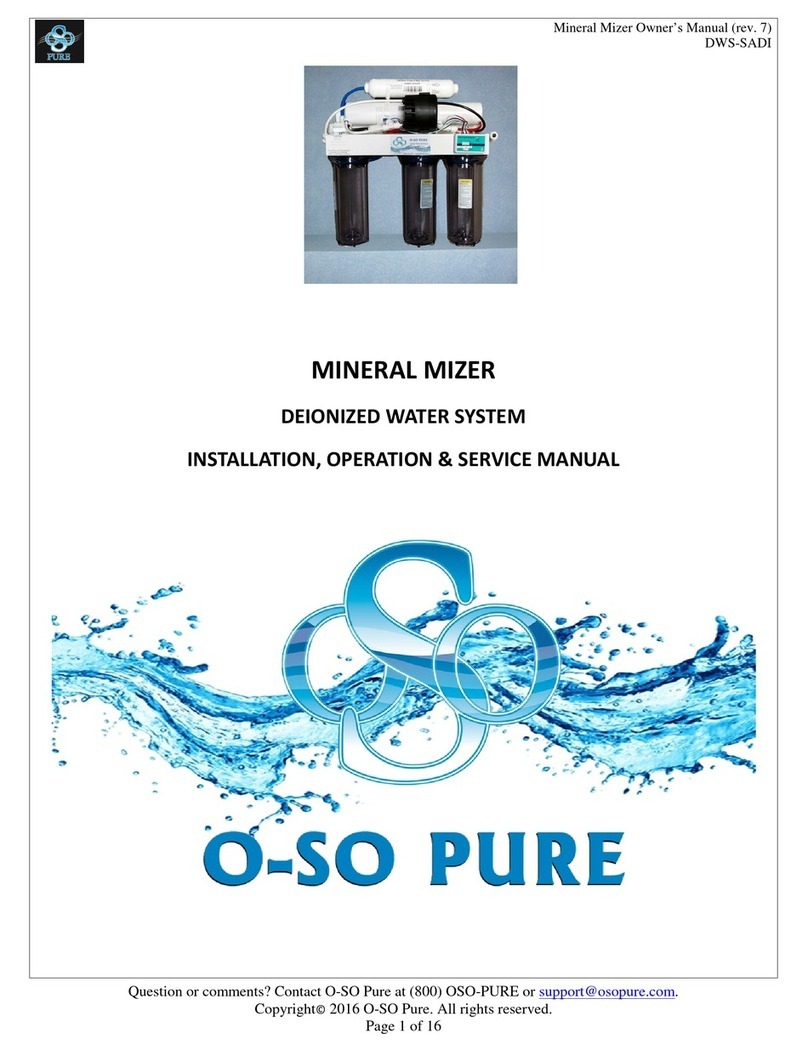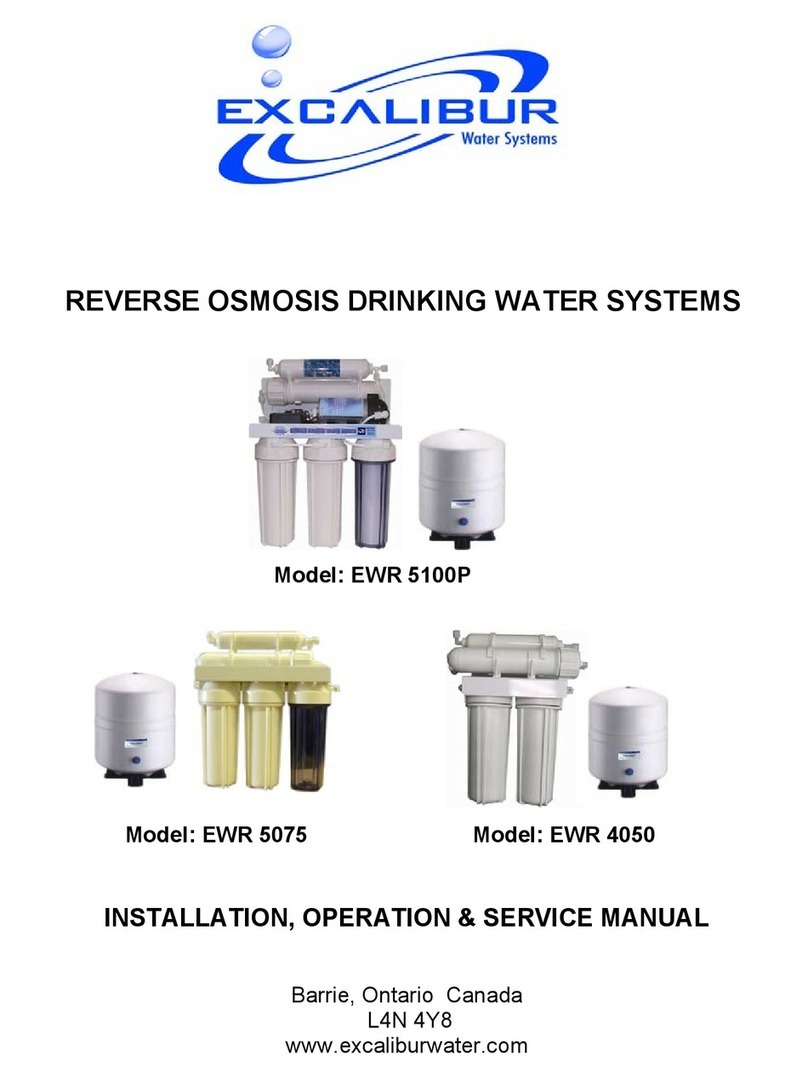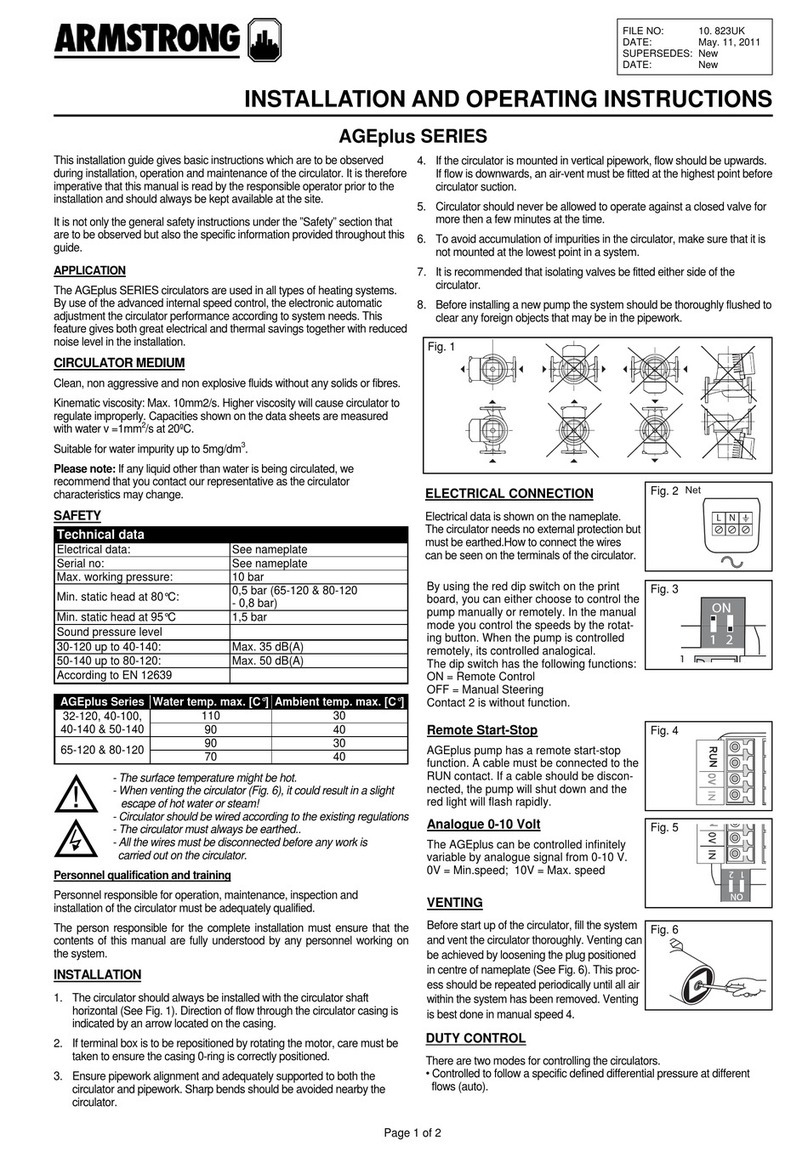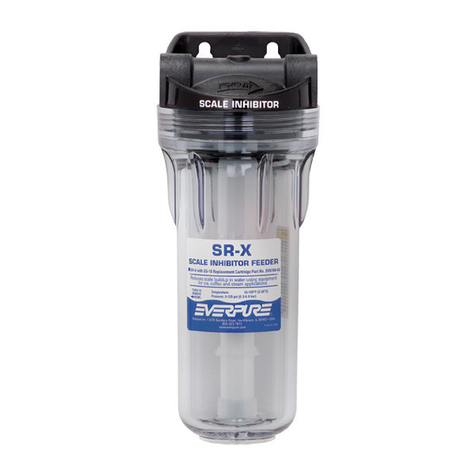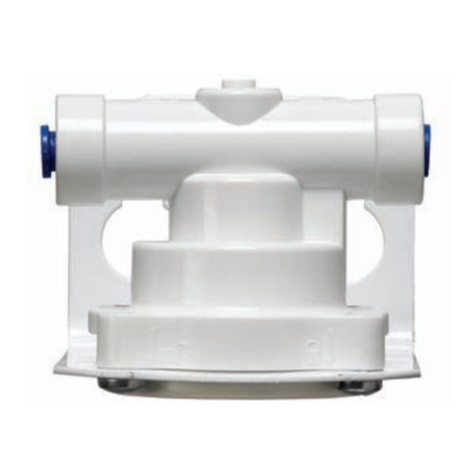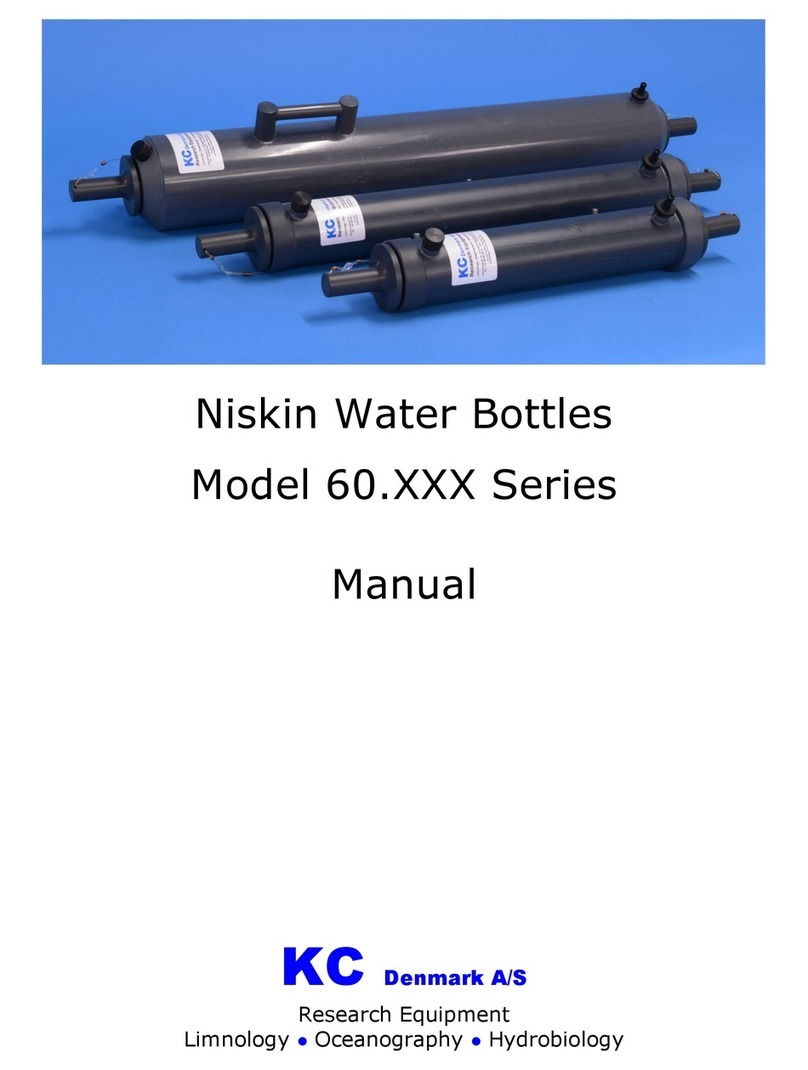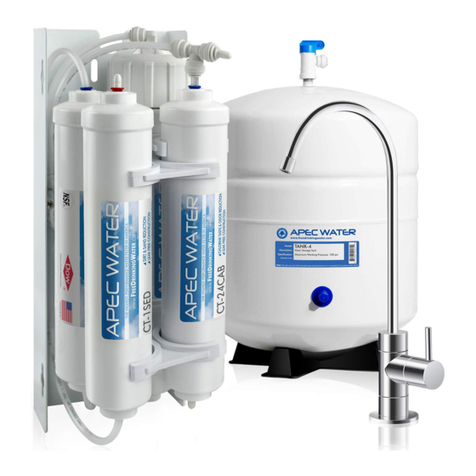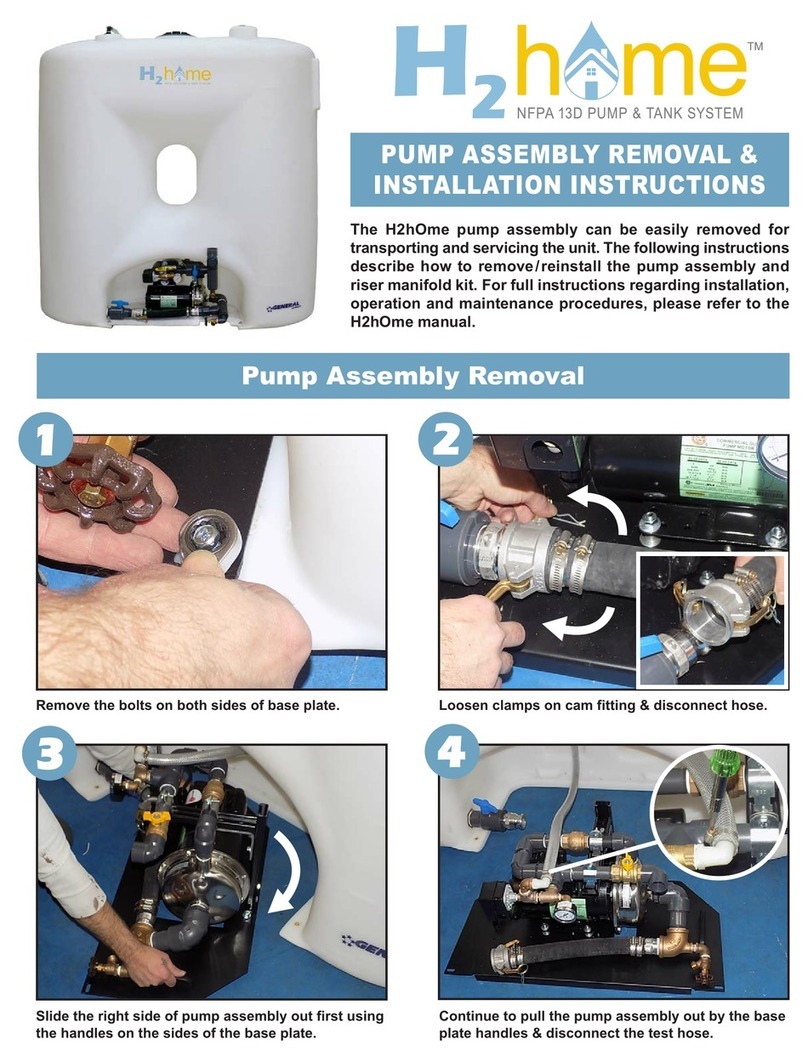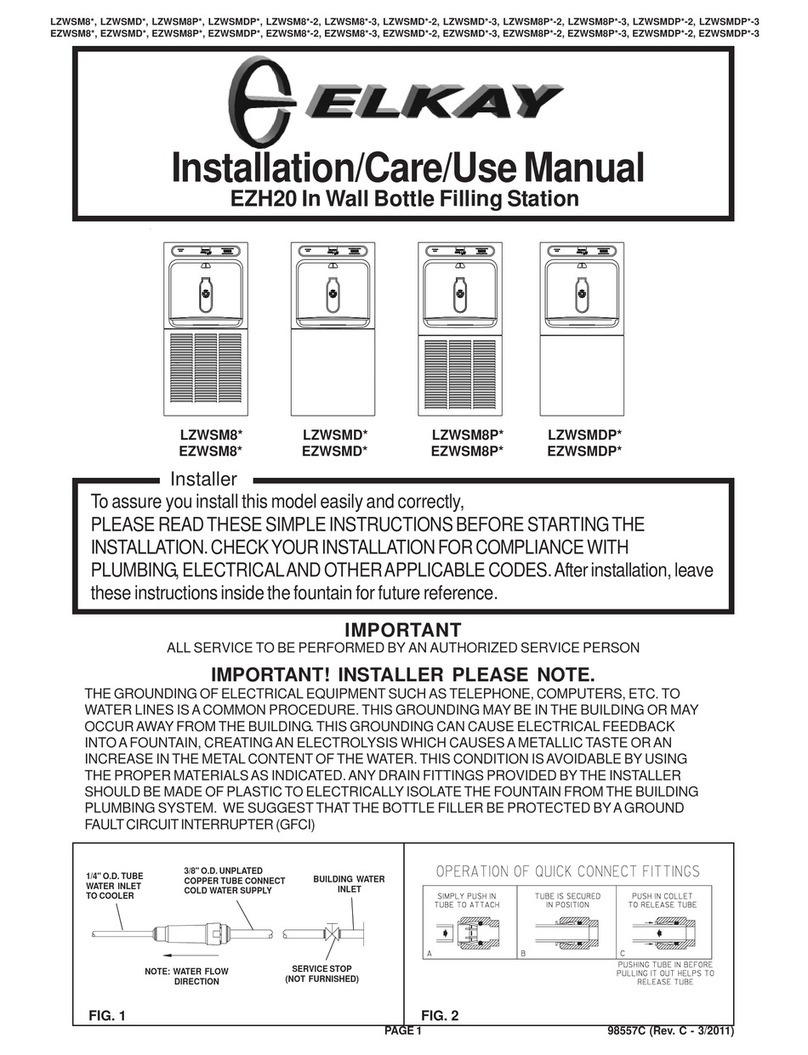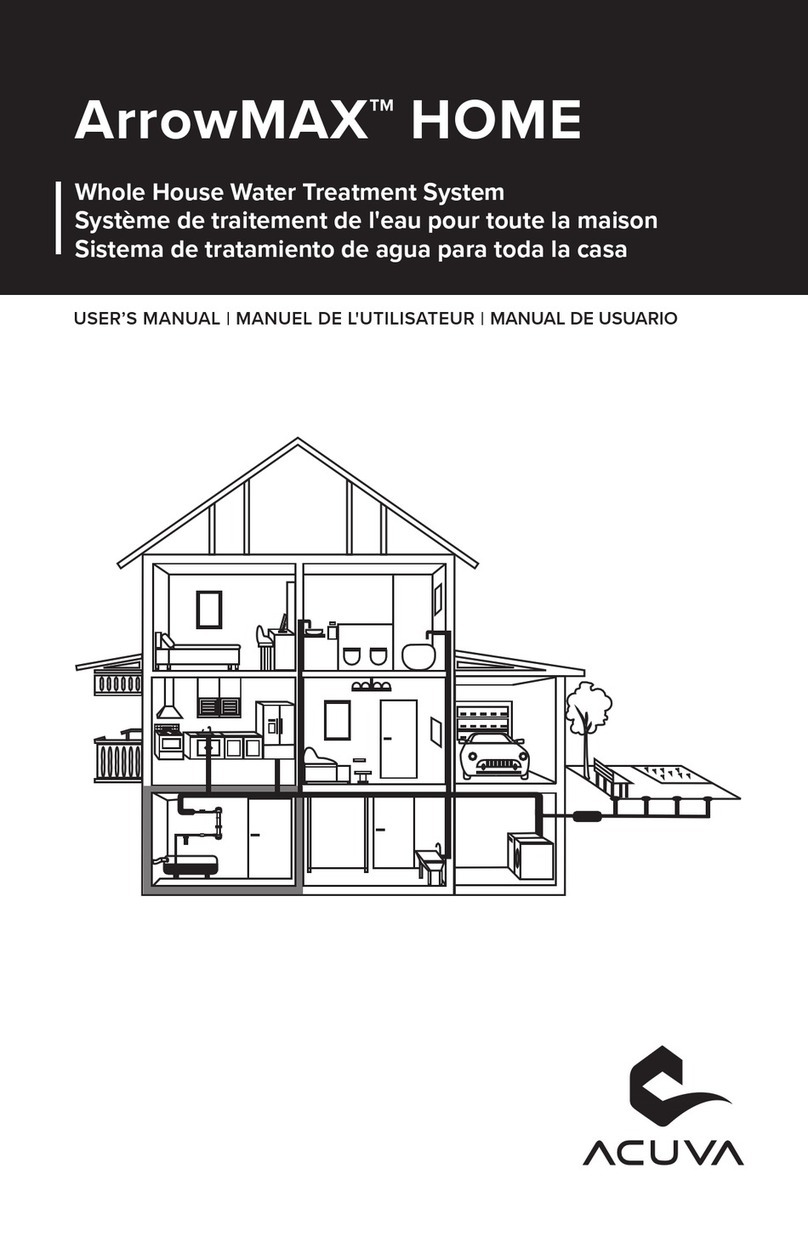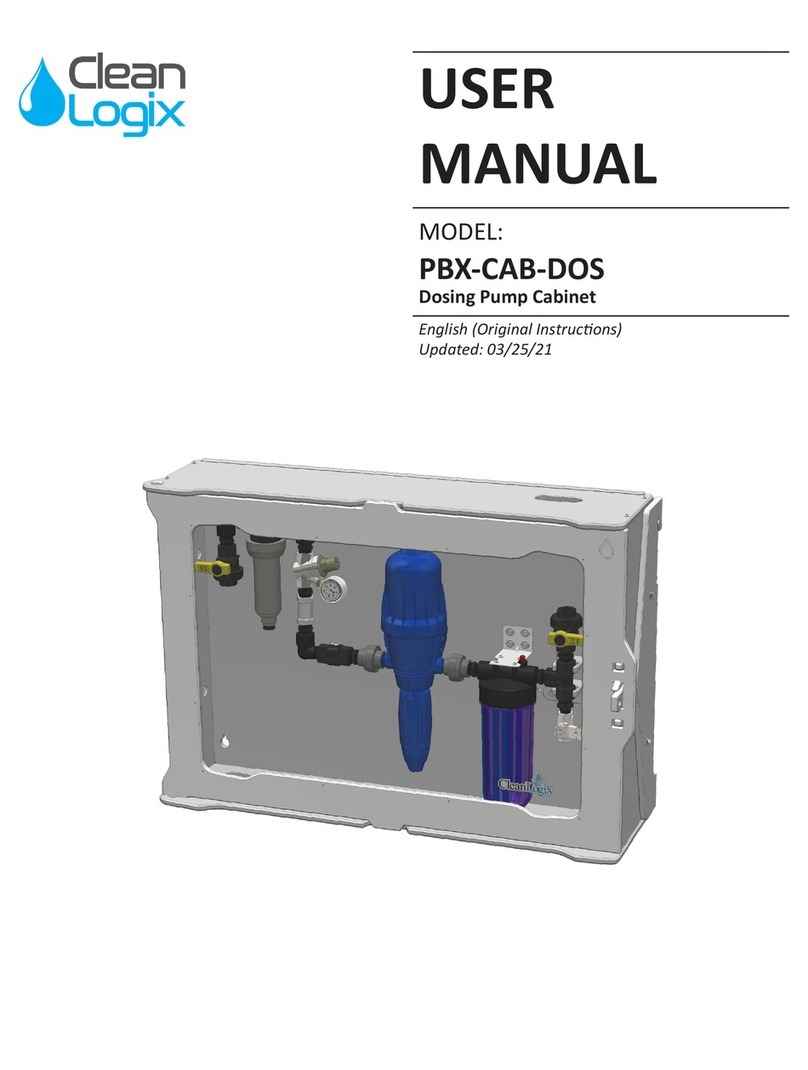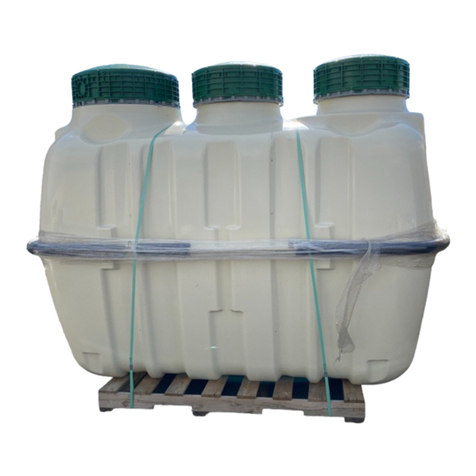
12
WATER SOFTENER DISINFECTION
The material of con truction of your water oftener will not
upport bacterial growth nor will the e material contaminate a
water upply. However, the normal condition exi ting during
hipping, torage, and in tallation indicate the advi ability of
di infecting a oftener after in tallation, before the oftener i
u ed to treat potable water. In addition, during normal u e a
oftener may become fouled with organic matter or in ome
ca e , with bacteria from the water upply.
Therefore, every water oftener hould be di infected
after in tallation, ome will require periodic di infection during
their normal life. Di infect a follow :
SODIUM HYPOCHLORITE (hou ehold bleach)
5.25% SODIUM HYPOCHLORITE olution are available
under uch trade name uch a Clorox, Linco, Bo Peep,
White Sail and Eagle Brand Bleach. If tronger olution
are u ed, uch a tho e old for commercial laundrie ,
adju t the do age accordingly.
1. Do age:
a.Softening re in; 1.2 fluid ounce per cubic foot of
mineral ( ee page 18).
2. Add the required amount of hypochlorite olution to the
brine well of the brine tank.
a. Proceed with the normal regeneration. Pre regen
and allow the water oftener to go through a normal
regeneration.
1. Salt U age: See your water conditioning profe ional for a
recommendation on the be t type of alt for your application.
2. Brine Tank Cleaning:
a. Remove brine tank cover.
b. Scoop out a much old alt a po ible.
c. Di connect brine tubing from afety brine valve at brine well.
d. Remove afety brine valve from brine well.
e. Place one hand in brine well to hold overflow nut and
remove 2 piece overflow.
f. Remove optional brine well and grid plate, if u ed, from
altkeeper.
g. Remove any remaining alt and/or impuritie from brine tank.
h. U ing clean water and a bru h or rag, wipe and rin e in ide of
brine tank. Al o wipe and rin e the grid plate and brine well.
i. Rea emble brine tank rever ing tep c - f. Note: If grid
plate i u ed and it i damaged or cracked, replace with new one.
j. Put brine tank in place making ure there i no debri or
foreign material beneath it.
k. Reconnect brine tubing to afety brine valve.
l. Manually add 6 inche of water to the altkeeper (or to
approximately 1” above the grid plate, if u ed).
m. Add new alt. Important: Do not add the old alt which wa
removed earlier unle it i clean and not mu hy. We
recommend u ing new alt.
n. Follow the di infection in truction found on page 8.
o. Put on brine tank cover.
MISCELLANEOUS
WATER SOFTENER DRAINING PROCEDURE
In cold weather climate it i common for plumbing y tem that
are not in u e to be “winterized“ or drained of all water to prevent
any damage that may be cau ed by the exce ive expan ion of
water when it freeze . To prevent damage to a water oftener
it mu t be properly drained al o. A imple way to properly drain
or winterize a water oftener i to u e compre ed air to force
all of the water out of the oftener mineral tank. The following
procedure will explain the proce :
1) Initiate the oftener into a manual regeneration cycle. After
the refill cycle, advance control to backwa h and allow it to
complete the backwa h cycle (thi will clean the media) and
tart into the brine-draw cycle. Allow the regeneration to
continue in the brine draw cycle until the brine i drawn out
of the alt keeper and the air check at the bottom of the brine
pick-up tube hut off. At thi time no more brine i intro-
duced into the oftener and the low rin e proce begin .
2) Turn the water upply inlet and outlet valve off to the water
oftener a oon a the air check hut off and no more
brine i being drawn into the oftener (at the beginning of the
low rin e proce ).
3) Unplug the electric power leaving the oftener control valve
in the brine draw cycle.
4) Di connect the brine tube at the top of the alt keeper and
force air into the brine tube toward the oftener mineral tank
and control valve. The air will force the brine/water olution
that wa drawn into the mineral tank out to drain through the
control valve drain line. (An air compre or blow gun attach-
ment with a portable air compre or work well.)
CAUTION: You do not want to apply any more pre ure than
nece ary to force the brine/water out of the mineral tank.
The mall amount of brine/water that may be left in the
mineral tank will not expand enough to cau e any damage
to the oftener when it freeze .
If your oftener i equipped with an optional bottom drain on
the mineral tank, you will have to follow all of the ame
procedure with the exception of the need for compre ed
air. With the brine tube di connected from the alt keeper,
rai e it to a level above the oftener control valve and
temporarily ecure it in thi po ition. Now open the drain
valve at the bottom of the mineral tank and allow all brine/
water to drain from the mineral tank.
CAUTION: If a ho e i connected to the drain valve to direct
the brine/water to a floor drain be ure it run downward and
i unob tructed. When brine/water quit running at the drain,
be ure to leave the drain valve open until you tart the
y tem up again.
5) At thi time the alt keeper ha very little water left in it. What
liquid i left in the alt keeper i aturated brine, provided that
there i till alt left in the tank. Saturated brine will not freeze
olid and cau e any damage and doe not have to be drained
any further from the brine tank.
If there i no alt left in the alt keeper when the y tem i
drained we recommend dumping all of the water out of the
brine tank at thi time. See brine tank cleaning in truction .
(#3 in mi cellaneou ection, below)
6) CAUTION: It i important at thi time to be a ured that the
inlet/outlet water upply piping i properly drained. Depend-
ing on how the water upply piping wa routed to the water
oftener control valve, a water loop or trap may have been created.
Sometime drain valve( ) are in talled at the bottom of the
loop to a ure all water can be drained out. If not it may be
nece ary to di connect the control valve from the piping
y tem and open the inlet/outlet valve( ) to allow all the water
to drain from the piping. Thi hould be done when the re t
of the plumbing y tem i drained.
7) Draining or winterizing of your oftener i complete. Refer to
the tart-up procedure on page 6 when you are ready to tart
your oftener.




















